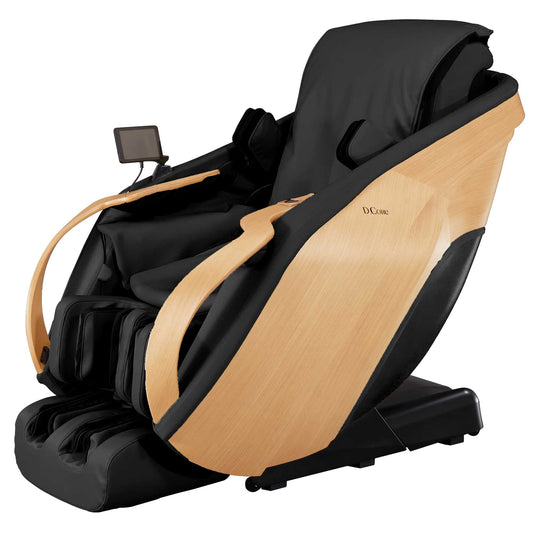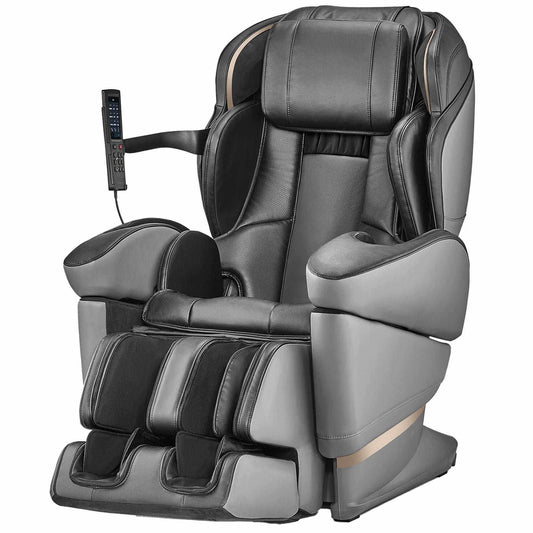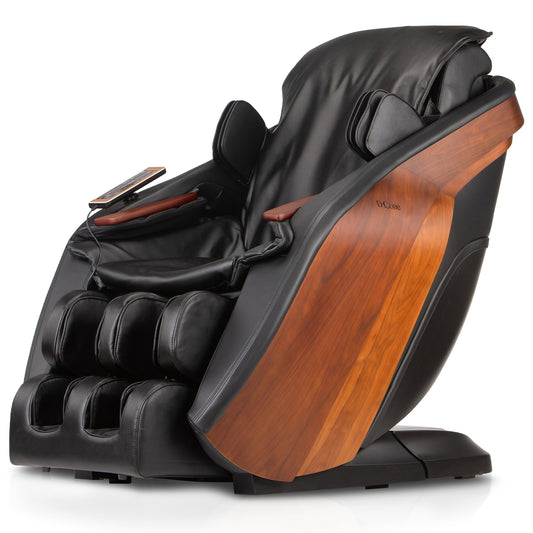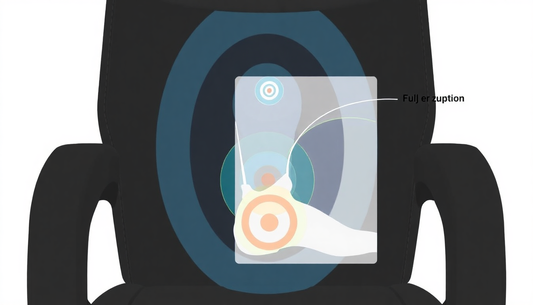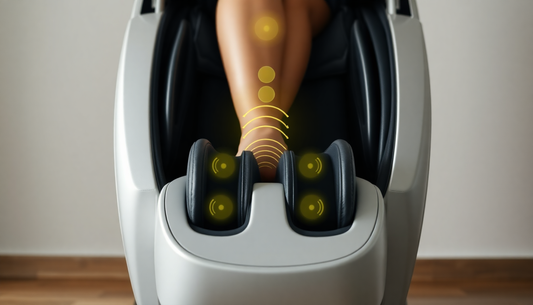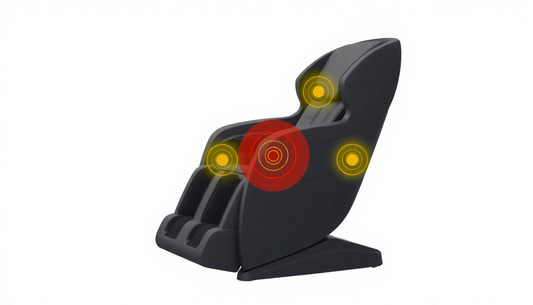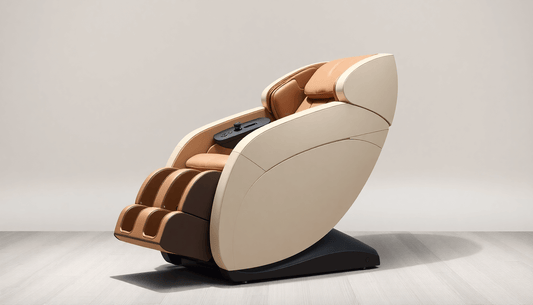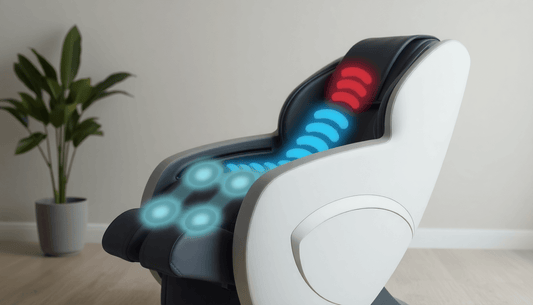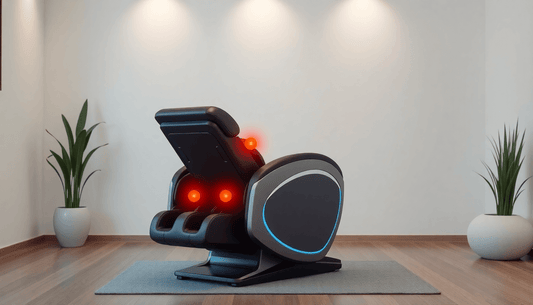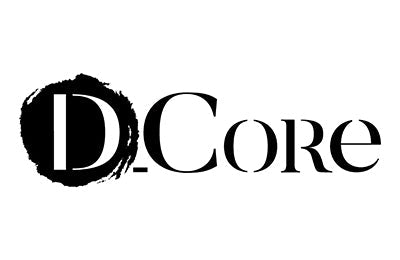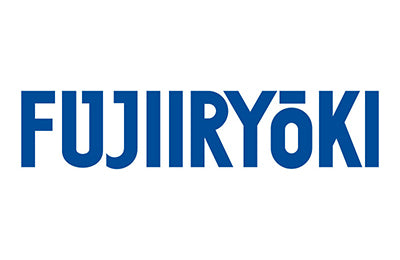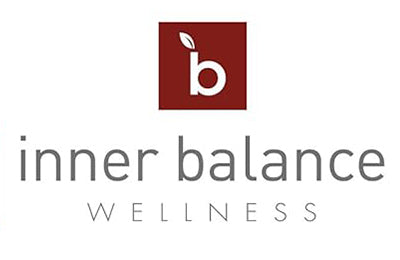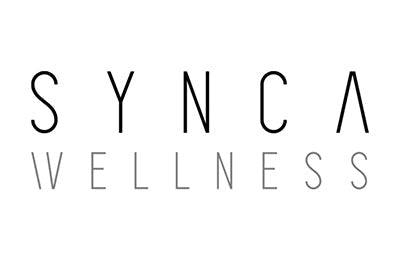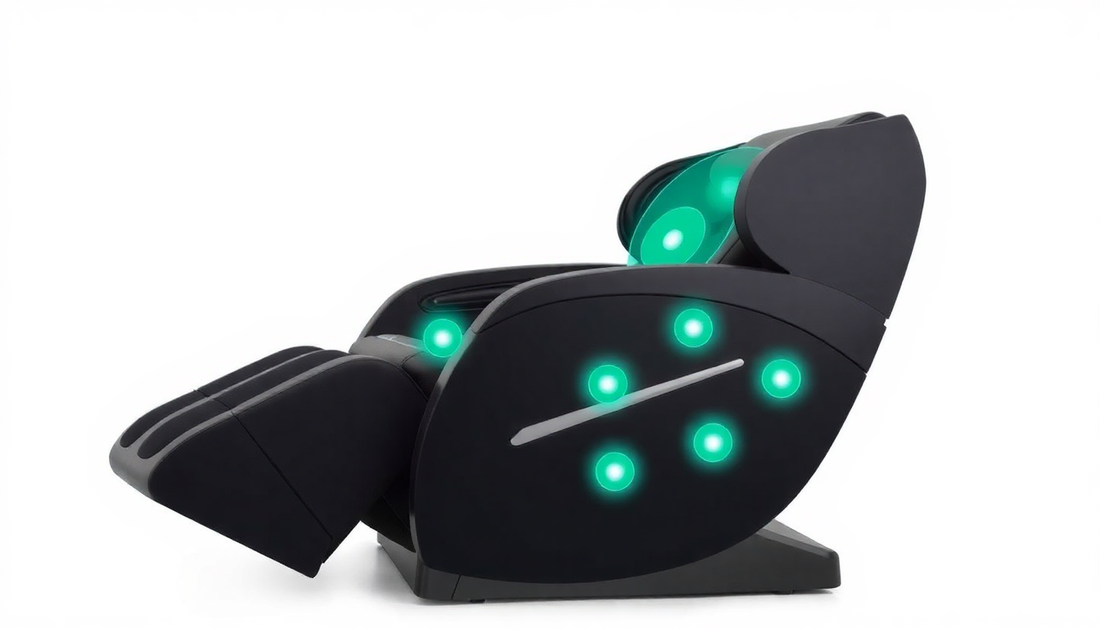
Fujiiryoki Massage Chair Presentation: 4-Day Model-by-Model Guide (Calm Plus, Cyber Relax AI, Pro & Elite) — Massage Techniques, Target Zones & Therapeutic Benefits
Introduction
Welcome to an expanded, in-depth 4-day presentation of Fujiiryoki massage chairs for 2025. This comprehensive guide explores four flagship models — Calm Plus, Cyber Relax AI, Cyber Relax Pro, and Cyber Relax Elite — and explains how each model applies massage techniques to specific target zones, plus the therapeutic benefits users can expect. If you are researching Fujiiryoki massage chairs for home wellness, athlete recovery, or therapeutic use, this long-form article will help you compare models, learn technique specifics, plan sessions, and get the most from your investment.
Why This Guide Helps You Decide
- Model-by-model detail to match lifestyle and therapeutic goals
- Clear mapping of massage techniques to body parts like ankle, back, calf, feet, hands, head, heel, knee, legs, neck, shoulder, thigh, whole body, and wrist
- Evidence-informed explanations of how techniques produce benefits such as blood flow control, fatigue relief, flexibility improvement, injury recovery, muscle therapy, pain relief, spine alignment, stress relief, and tissue therapy
- Practical session plans, safety guidance, maintenance, and buying advice
SEO and Reader Intent
This article targets people who search for Fujiiryoki massage chair reviews, model comparisons, therapeutic benefits, and technique explanations. It is structured for both skimmers and deep readers with clear headings, lists, and practical takeaways to support organic search visibility and user satisfaction.
Understanding the Massage Techniques
Before diving into each model, it helps to understand the massage techniques referenced across Fujiiryoki chairs. Each technique has specific physiological effects and is suited to different goals.
Swedish Massage
- What it is: Long, gliding strokes, effleurage, and light pressure to warm tissue and promote circulation
- How it helps: Improves blood flow control, reduces superficial muscle tension, and prepares deeper tissues for more targeted work
Deep Tissue Massage
- What it is: Slow, focused pressure applied to deep muscle layers and fascia
- How it helps: Effective for muscle therapy, breaking up adhesions, aiding injury recovery when used appropriately
Trigger Point Massage
- What it is: Sustained pressure on hyperirritable spots within muscle that refer pain
- How it helps: Targeted pain relief and decreased irritability of specific muscle knots; often paired with stretching for best results
Acupressure
- What it is: Focused pressure on traditional points to modulate autonomic response and regional circulation
- How it helps: Stress relief, improved blood flow control, and complementary effects on pain modulation and sleep
Shiatsu Massage
- What it is: Finger and palm pressure with rhythmic movement along meridian-like pathways
- How it helps: Deep relaxation, joint mobility, and nervous system downregulation useful for chronic pain and stress
Reflexology
- What it is: Concentrated manipulation of foot and hand reflex zones believed to correspond to body organs and systems
- How it helps: Local circulation improvement in feet and heels, reduced plantar pain, and a relaxing systemic effect
Kneading
- What it is: Circular or squeezing motions that lift and compress muscle to increase pliability
- How it helps: Releases muscle tension, improves tissue quality, and supports flexibility improvement
Day 1: Calm Plus — Gentle Comfort & Whole-Body Recovery
Model Overview and Ideal User
The Calm Plus is Fujiiryoki's comfort and everyday wellness model. It prioritizes gentle, rhythmic programs designed for stress relief, improved circulation, and restorative daily use. This model suits users who want consistent relaxation, spine support, and light therapeutic effects without intense pressure.
Detailed Target Zone Coverage
- Head and neck: ergonomic head support with gentle compression and kneading patterns to release cervical tension
- Shoulders and upper back: mild shiatsu-like compression to relieve desk-related tightness
- Mid and lower back: lumbar-focused rollers to encourage spine alignment and reduce lower back stiffness
- Calves, heels, ankles, and feet: gentle reflexology and compression to mitigate swelling and plantar discomfort
- Hands and wrists: mild compression for screen-time users and mild repetitive strain relief
- Whole body: coordinated full-body routines to promote systemic relaxation and blood flow control
Technique Use and Therapeutic Outcomes
- Swedish and kneading modes lead to improved superficial circulation and fatigue relief after a long day
- Gentle shiatsu and acupressure patterns decrease sympathetic arousal and enhance stress relief
- Foot reflexology programs support heel and plantar comfort and help reduce localized foot pain
- Consistent low-to-moderate sessions help maintain spine alignment and reduce morning stiffness over time
Session Plans and Progression
- Beginner plan: 10 to 15 minutes daily of full-body Swedish to build tolerance and improve circulation
- Maintenance plan: 20 minutes, alternating neck/shoulder compression and lumbar roller focus every other day
- Relaxation plan: 30 minutes on weekends combining mild reflexology, gentle kneading, and head/neck compression for sleep preparation
Practical Tips
- Use calm, low-intensity sessions after work to reduce evening stress
- Hydrate after sessions to support metabolic clearance
- If you have pronounced foot pain such as plantar fasciitis, start with shorter foot-only programs and consult a clinician for persistent problems
Day 2: Cyber Relax AI — Smart Personalization & Targeted Therapy
Model Overview and Ideal User
Cyber Relax AI integrates sensors and adaptive algorithms to personalize pressure, technique blends, and treatment zones in real time. It's ideal for people who want precise work on stubborn pain areas, targeted injury recovery support, or an intelligent chair that learns your body through usage.
Advanced Target Zone Mapping
- Dynamic cervical mapping for neck and head tension detection
- Shoulder blade scanning to locate upper trapezius and levator scapulae knots
- Thoracic and lumbar profiling to adjust roller depth for spine alignment needs
- Lower limb mapping to tailor calf, ankle, heel, and foot intensity for circulation control and reflexology
- Hand and wrist compression that adapts pressure for repetitive strain and tendon irritation
How the AI Uses Techniques
- Deep tissue and trigger point modules intensify only where the AI detects tightness or reduced mobility
- Acupressure points are triggered in combination with shiatsu sequences to reduce autonomic arousal
- Reflexology intensity is modulated based on calf and foot feedback to prevent overwork of sensitive heels
Therapeutic Benefits and Evidence-Based Rationale
- Pain relief: precise, targeted pressure helps desensitize trigger points and reduce referred pain
- Injury recovery support: controlled deep tissue can aid remodeling of scar tissue when used under a rehabilitation plan
- Flexibility improvement: targeted release combined with guided stretching sequences improves range of motion
- Tissue therapy: AI reduces risk of excessive force by modulating intensity based on user feedback and sensor input
Session Plans and Customization Strategies
- Initial scan: run the AI body scan on first use and select the adaptive recovery program for a baseline session
- Targeted protocol: use trigger point or deep tissue modules for 10 to 15 minutes on localized areas such as shoulders, lower back, or thighs
- Recovery cycle: post-exercise 25-minute program combining deep tissue on worked muscles followed by Swedish and circulation-focused foot programs
Clinical Considerations
- For acute injuries, avoid deep tissue for the first 48 to 72 hours unless cleared by a clinician
- Chronic conditions may benefit from a combination of AI-guided trigger point release and regular low-intensity maintenance sessions
Day 3: Cyber Relax Pro — Performance Recovery & Muscle Therapy
Model Overview and Ideal User
The Cyber Relax Pro is purpose-built for athletes, fitness enthusiasts, and people with physically demanding routines. It provides stronger rollers, deeper kneading, and more intense calf and foot modules to support muscle therapy, lactic clearance, and accelerated recovery.
Target Zone Emphasis
- Enhanced lumbar and thoracic rollers for postural athletes and heavy lifters
- Intensive shoulder and neck programs for swimmers, rowers, and racket sport players
- Thigh, hamstring, knee, and calf sequences tailored for runners and cyclists
- Advanced foot and heel reflexology for plantar load management
- Hands and wrist compression useful for climbing and racket sports recovery
Technique Integration for Performance Outcomes
- Deep tissue and trigger point sequences focus on breaking down adhesions and reducing muscle stiffness after training
- Alternating high-intensity kneading with Swedish strokes promotes blood flow control and aids metabolic waste removal
- Reflexology programs assist in reducing plantar fatigue and heel pain after long runs or standing events
Session Plans for Athletes
- Post-workout short protocol: 15 to 20 minutes focusing on worked muscle groups using deep tissue followed by light Swedish for cool down
- Pre-competition activation: 10 minutes of moderate kneading and dynamic compression to increase blood flow without causing muscle fatigue
- Recovery day session: 30 minutes combining deep releases with circulation and calf/foot decompression to accelerate recovery
Practical Advice
- Rotate attention between legs and back to avoid excessive pressure on the same tissue during a single session
- Combine chair sessions with targeted stretching and hydration for best flexibility improvement and muscle therapy outcomes
Day 4: Cyber Relax Elite — Comprehensive Therapy & Luxury Precision
Model Overview and Ideal User
The Cyber Relax Elite is the flagship offering combining advanced mechanics, wider coverage, and the most extensive program library. It is designed for users who want both clinical-level therapeutic features and premium comfort, including people with chronic pain, professionals who travel, and households seeking a long-term wellness hub.
Most Comprehensive Target Zone Coverage
- Scalp and cranial stimulation for headache and tension relief
- Full cervical to sacral spine alignment capabilities, including pelvic support
- Precision thigh and hamstring work with configurable depth for knee rehabilitation support
- Advanced calf-to-foot reflexology with adjustable heel focus and ankle compression for venous return
- Forearm and wrist compression designed for repetitive strain injury mitigation and improved circulation
Integrated Techniques and Therapeutic Rationale
- Shiatsu and acupressure routines tailored to reduce chronic pain and improve autonomic balance
- Deep tissue and trigger point options with graduated intensity controls for safe remodeling of dense tissue
- Integrated reflexology and kneading sequences to maximize whole-body tissue therapy
- Programs aimed at spine alignment that combine lumbar traction, pelvic support, and postural roller sequencing
Program Planning for Chronic Conditions and Long-Term Wellness
- Daily maintenance session: 15 to 20 minutes focusing on neck and lower back to support spine alignment and reduce chronic pain
- Therapeutic cycle: 4-week program combining trigger point release twice weekly, daily light mobility sessions, and weekly long restorative sessions of 30 to 40 minutes
- Travel recovery protocol: 20 to 30 minutes of circulation-focused calf and foot programs to reduce edema and heel discomfort after flights
Special Features and Luxury Additions
- Fine-tunable pressure settings to match tissue sensitivity across age groups
- Longer runtime for extended therapy sessions recommended by clinicians for chronic conditions
- Multiple memory profiles so household members can save personalized settings for ankles, knees, back, neck, shoulders, and feet
Comparing Models in Depth
- Calm Plus: best for daily relaxation and circulatory support. Lower intensity, simple program set, comfortable for elderly users and first-time massage chair owners.
- Cyber Relax AI: best for users who want intelligent mapping and adaptive pressure for targeted work and injury support.
- Cyber Relax Pro: best for athletes and physically active users needing deep muscle therapy and recovery timing features.
- Cyber Relax Elite: best for users seeking the broadest therapeutic toolkit, precision spine alignment, and luxury comfort for chronic or complex needs.
How Each Model Addresses Specific Body Parts
Below are concise notes on how the chairs work on each major target area and which model is most suitable.
- Ankle: compression and adjustable intensity. Best models: Cyber Relax AI and Elite for adaptive and precise ankle support.
- Back: rollers, lumbar focus, and traction. Best models: Pro for athletes, Elite for chronic spine care.
- Calf: compression and kneading for venous return. Best models: Pro and Elite for stronger calf modules.
- Feet and Heel: reflexology pads and rollers. Best models: Calm Plus for gentle work, Pro and Elite for intensive reflexology.
- Hands and Wrist: compression for repetitive strain. Best models: AI and Elite with adaptive compression.
- Head: cranial gentle stimulation and neck release. Best model: Elite for dedicated head and scalp options.
- Knee: targeted kneading and gentle compression. Best models: Pro and Elite for configurable knee support.
- Leg, Thigh: deep tissue rollers and kneading. Best models: Pro for athletic recovery, Elite for clinical-level programs.
- Neck and Shoulder: acupressure, shiatsu, and trigger point work. Best models: AI and Elite for precision targeting.
- Whole Body: coordinated full sessions that integrate all modules. Best models: Elite and AI for comprehensive programs.
- Wrist: mild compression and circulation support. Best models: AI and Elite for finer control on wrist pressure.
Designing a 4-Week Program Using One Model
Here is a practical 4-week template that can be adjusted depending on which Fujiiryoki model you choose.
- Week 1: Build tolerance. Daily 10 to 15 minute low-intensity Swedish or kneading sessions focused on neck, shoulders, and calves.
- Week 2: Target problem areas. Introduce 10 to 15 minute trigger point or deeper kneading on one to two focal zones three times per week.
- Week 3: Increase therapeutic load. For Pro or Elite users, include two 20 to 30 minute deep tissue sessions and moderate circulation sessions on alternate days.
- Week 4: Recovery and consolidation. Use longer restorative sessions of 30 to 40 minutes combining acupressure, reflexology, and light spinal alignment work. Assess changes in pain, flexibility, and fatigue.
Safety, Contraindications and Best Practices
- Always consult a healthcare professional before using deep tissue or trigger point programs if you have recent surgeries, fractures, clotting disorders, or are pregnant.
- People with implanted devices such as pacemakers should consult a clinician before use.
- Start low and progress slowly to allow tissues and the nervous system to adapt.
- Do not use high-intensity programs on inflamed or acutely injured tissue; avoid deep tissue during the first 48 to 72 hours after acute injury unless cleared by a clinician.
- Hydrate and combine sessions with active recovery like walking or light stretching for best outcomes.
Maintenance and Longevity Tips
- Keep the chair clean by wiping surfaces with a damp cloth and mild soap; avoid harsh chemicals
- Follow scheduled servicing recommendations in the owner manual for rollers and electronics
- Use a surge protector and place the chair on a stable, level surface to protect mechanical components
- Rotate memory profiles and program usage to avoid uneven wear on rollers and airbags
Buying Guide and Considerations
- Define your primary goal: relaxation, injury recovery, athletic performance, or chronic pain management
- Match model features to goals: Calm Plus for daily calm, Cyber Relax AI for personalized therapy, Pro for athletes, Elite for clinical-grade versatility
- Test intensity levels and memory profiles during a demo to ensure the chair fits your height and comfort preferences
- Consider warranty length, local service availability, and accessory options like extended headrests or specialized cushions
Frequently Asked Questions
- How often should I use a Fujiiryoki chair? For general wellness, daily short sessions of 10 to 20 minutes are helpful. For targeted therapy, alternate higher-intensity sessions with rest days to avoid overworking tissues.
- Which model is best for chronic lower back pain? The Cyber Relax Elite provides the most comprehensive lumbar and pelvic support, but Cyber Relax AI can be very effective if the issue is localized and responds to targeted trigger point work.
- Can I use the chair after surgery? Only with permission from your surgeon or rehabilitation clinician. Avoid deep tissue programs during the early healing phase.
- Do massage chairs help with spine alignment? Chairs can support posture and reduce muscular imbalances that contribute to poor alignment, especially with consistent use of lumbar programs. They are not a substitute for clinical spine care when structural issues are present.
Putting It All Together
Fujiiryoki offers a model for nearly every user profile. Calm Plus favors everyday relaxation and circulation, Cyber Relax AI offers adaptive, personalized therapy, Cyber Relax Pro targets athletes and muscle recovery, and Cyber Relax Elite combines the most advanced therapeutic and luxury features. Across all models, the blend of Swedish, deep tissue, trigger point, acupressure, shiatsu, reflexology, and kneading techniques can address the full range of target zones from head to ankle and support clinically meaningful benefits like pain relief, blood flow control, flexibility improvement, and tissue therapy when used thoughtfully.
Final Notes and Next Steps
- Decide on priorities: relaxation, performance, or therapy
- Try the models when possible and ask for trials to experience intensity and coverage
- Create a realistic session schedule based on the plans in this guide and track outcomes like pain levels, sleep quality, mobility, and fatigue
Disclaimer
This article is for informational and educational purposes and does not replace professional medical advice. Consult your physician, physical therapist, or other healthcare provider for personalized recommendations before beginning any new therapeutic program or using high-intensity massage chair features.
